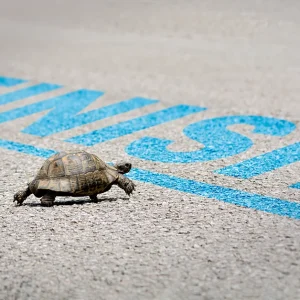Clinical judgment and clinical reasoning have been long-touted student outcomes of pre-licensure nursing education programs. As nursing and healthcare evolve, these buzzwords have been increasingly featured in our curriculum design, competency lists, syllabi, accreditation manuscripts, and standards of practice. But what is clinical judgment anyway? What is it, how do we help students develop it, and how can we measure it as an outcome?
What is clinical judgment?
If you ask five experienced nurses this question, you are likely to get five different answers – and all of them may be correct! Many efforts have been made to define the phenomenon of clinical judgment, and several different models exist (Cappelletti et al., 2014; Manetti, 2019). Recently, clinical judgment has made its way to the front and center of our licensure exams as the National Council of State Boards of Nursing’s (NCSBN, 2019) Clinical Judgment Measurement Model. The mental response of nurses to clinical cues has now been broken down into discrete steps in this Clinical Judgment Measurement Model:
(https://www.ncsbn.org/14798.htm)
The multi-layered model breaks down the steps a nurse must take to decide on appropriate clinical responses to client needs. Essentially, clinical judgment in nursing requires the nurse to recognize the signs that a problem exists and employ critical thinking to respond to those signs. The steps of the Clinical Judgment Measurement Model include (NSCBN, 2019):
- Form hypotheses: The nurse must interpret the most relevant pieces of information within the context of the patient’s clinical condition.
- Refine hypotheses: The nurse must refine hypotheses by considering which is most likely, most urgent, or of greatest risk. The nurse can then generate solutions to respond to the priority problem.
- Evaluation: After implementing interventions to address the priority problem, the nurse reevaluates the scenario and compares the observed outcome to the expected outcome. This process then repeats as necessary.
With experience, this thought process becomes less structured and more fluid. As nurses transition from novice to expert, their actions are progressively governed less by rigid principles and rules (Benner, 1984). Nurses practicing at a higher level of proficiency act according to the context of each specific situation. Such clinical discernment can only be obtained through real-world nursing experience. Although such expert-level practice can seem very far removed from the level of a first-semester student who is struggling just to learn drug suffixes, it is never too early to start helping your students hone their clinical judgment.
How can I help my students develop clinical judgment?
How, when our students complete only a fixed and limited number of clinical hours interacting with patients, can we help them develop clinical judgment? While there is no substitute for real-world nursing experience, several strategies exist to help us increase the learning “yield” from students’ limited clinical hours. Two proven strategies to foster development of clinical judgment are high-fidelity simulation and guided reflection (Cappelletti et al., 2014).
Simulation
Simulation is not a true proxy for bedside experience, but simulated learning experiences can be designed to incorporate the same cues and conditions as the clinical environment. Simulated learning activities can also be introduced at the optimal time in the curriculum to reinforce student learning, whereas clinical encounters are largely random and may require knowledge of diseases and therapeutics that students have not yet been exposed to. Additionally, simulation offers the advantage of having a safe, controlled environment for students to practice engaging in clinical judgment without the risk of harming patients. These advantages make simulation an ideal environment to allow for mistakes and growth.
Simulation is more than just practice for the bedside, though. Careful and intentional simulation design should prioritize ample opportunity for student reflection and engagement. As with any learning activity, objectives should be clearly defined in a simulation pre-briefing (Al Sabei & Lasater, 2016). Although simulation design is time-consuming, a relative paucity of faculty attention is given to designing a structured debriefing. This is unfortunate, as a student’s ability to transfer simulation learning into actual clinical practice depends heavily on the quality of post-simulation debriefing.
Optimally, faculty should focus on debriefing as the heart of the simulation activity and be prepared to spend twice as long in debriefing as was spent in the simulated encounter (Al Sabei & Lasater, 2016). So, for example, an hour-long simulation exercise might begin with 20 minutes of actual simulation and a full 40 minutes for rich debriefing. During debriefing, a facilitator should guide students to reflect on their observations, perceptions, and feelings experienced during the exercise. The more actively a student participates in simulation, the more learning is reinforced. The National League for Nursing (2019) offers a simulation design template with 21 open-ended questions designed to prompt reflection in debriefing.
Guided Reflective Writing
Unlike high-fidelity simulation, which is now widely used in nursing education, guided reflection remains a relatively untapped resource as a learning exercise. Nursing students first learn nursing as a set of context-free rules and principles for the provision of nursing care. However, this does not effectively prepare them for the practice setting, where all clinical judgment requires a consideration of context and the patient scenario as a whole. Guided reflection, whether through individual journaling, group discussion, or a graded reflective writing exercise, is shown to help learners integrate theoretical nursing knowledge with real-world, experiential knowledge (Benner, 1984).
In exercises modeled after Tanner’s (2006) model of clinical judgment, for example, a student might be asked to describe what he or she noticed about the patient first, then in a follow-up prompt asked what they noticed about the patient later in the clinical day (Smith, 2021). Such nuanced aspects of a novice’s assessment would otherwise be buried and lost in a conventional clinical care plan assignment where all information is considered equal and placed under the umbrella of “assessment.” Structuring or guiding students’ reflection in this way prompts them to describe how a situation unfolded, how their understanding of the situation evolved during the clinical assignment, and how they decided on their chosen course of action rather than alternative actions (Benner et al., 2009).
While we may feel that we give students ample opportunity for reflection in clinical post-conferences and simulation debriefings, individual reflective activities, such as reflective journaling, have the added advantages of both allowing students to be candid and of allowing students and educators alike to observe the students’ gradual clinical learning. Engaging nursing students in a guided reflective journaling exercise allows educators to prompt them with questions that go beyond the prompts of a conventional “care plan.”
Other Strategies
Unfolding case studies similar to those used in the NCSBN’s (2020) Next Generation NCLEX® can be used in classroom settings or even as a kind of virtual simulation experience that is friendly for socially-distanced classrooms when in-person learning isn’t feasible (Jeffries et al., 2016). Practice with NCLEX®-style question banks already offers built-in feedback in the form of a question explanation or rationale. Students may further enhance their learning from question bank practice by utilizing “notes” features to record their reflections about the featured clinical scenario.
If you aren’t prepared to overhaul your students’ coursework just yet, consider incorporating a once-per-semester, low-stakes assignment in which the student reflects on a specific patient or situation (simulated or actual) that stands out to them. Any weight or criteria placed on such an assignment should be specific enough to prompt rich reflection yet nonthreatening in a way that allows the student to feel safe to candidly reflect upon their learning experience. Incorporate this assignment regularly and enjoy watching your novice nursing students hone their abilities in holistic assessment, clinical reasoning, and even intuitive wisdom that make up sound clinical judgment.
UWorld’s Learning Platform for Nursing was developed by nursing educators and practicing nurses in a way designed to build critical reasoning and critical thinking skills. The assignable questions, detailed answer explanations, vivid illustrations and images, and performance tracking do more than just improve a program’s NCLEX-RN or NCLEX-PN pass rates — they build student confidence, increase learning opportunities, and help prepare the next generation of nurses for a safe, accurate, and fulfilling career in nursing. And now, you have the ability to create presentations or assignments using Next Gen case studies, traditional questions, or a mix of both.
If you have any questions or want to see a personal demo of UWorld’s Learning Platform for Nursing, contact [email protected].
References
Al Sabei, S. D., & Lasater, K. (2016). Simulation debriefing for clinical judgment development: A concept analysis. Nurse Education Today, 45, 42–47. https://doi.org/10.1016/j.nedt.2016.06.008
Benner, P. (1984). From novice to expert: Excellence and power in clinical nursing practice. Addison-Wesley.
Benner, P., Tanner, C., & Chesla, C. (2009). Expertise in nursing practice: Caring, clinical judgment, and ethics (2nd ed.). Springer.
Cappelletti, A., Engel, J. K., & Prentice, D. (2014). Systematic review of clinical judgment and reasoning in nursing. The Journal of Nursing Education, 53(8), 453–458. https://doi.org/10.3928/01484834-20140724-01
Jeffries, P. R., Swoboda, S. M., & Akintade, B. (2016). Teaching and learning using simulations. In D. M. Billings & J. A. Halstead (Eds.), Teaching in nursing: A guide for faculty (5th ed., pp. 304–323). Elsevier.
Manetti, W. (2019). Sound clinical judgment in nursing: A concept analysis. Nursing Forum, 54(1), 102–110. https://doi.org/10.1111/nuf.12303
National Council of State Boards of Nursing. (2019). Clinical judgment measurement model and action model. Next Generation NCLEX News, Spring 2019, 1–6. https://www.ncsbn.org/NGN_Spring19_ENG_29Aug2019.pdf
National Council of State Boards of Nursing. (2020). The NGN case study. Next Generation NCLEX News, Spring 2020, 1–7. https://www.ncsbn.org/NGN_Spring20_Eng_02.pdf
National League for Nursing. (2019, May). Simulation design template. Retrieved January 10, 2022, from http://www.nln.org/docs/default-source/professional-development-programs/sirc/simulation-design-template-2019newlogo.docx?sfvrsn=8
Smith, T. (2021). Guided reflective writing as a teaching strategy to develop nursing student clinical judgment. Nursing Forum, 56(2), 241–248. https://doi.org/10.1111/nuf.12528Tanner, C. A. (2006). Thinking like a nurse: A research-based model of clinical judgment in nursing. Journal of Nursing Education, 45(6), 204–211. https://doi.org/10.3928/01484834-20060601-04




